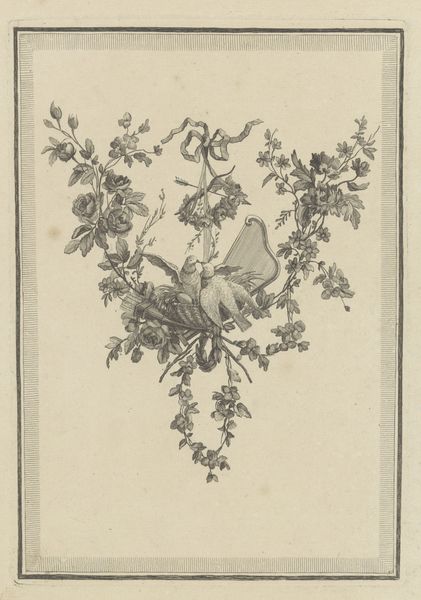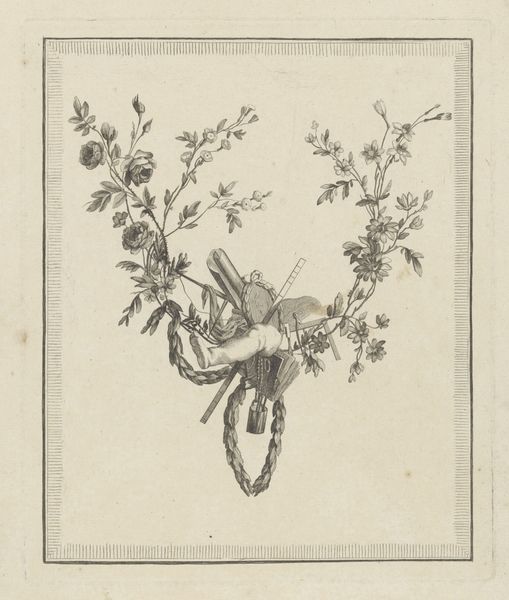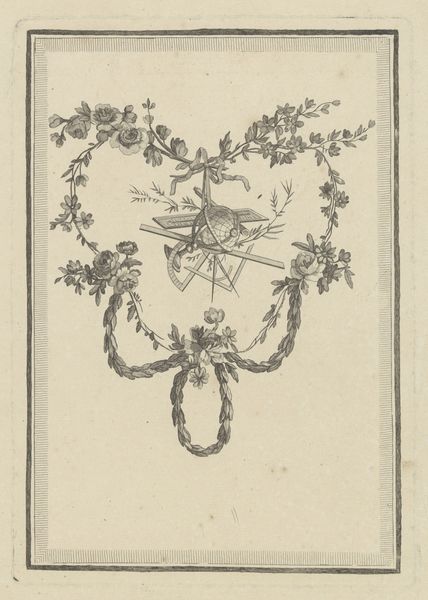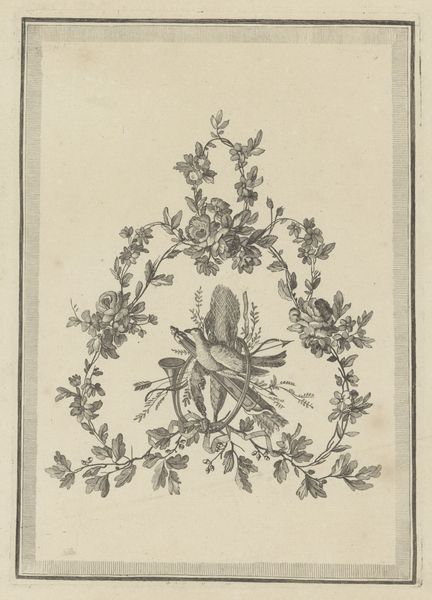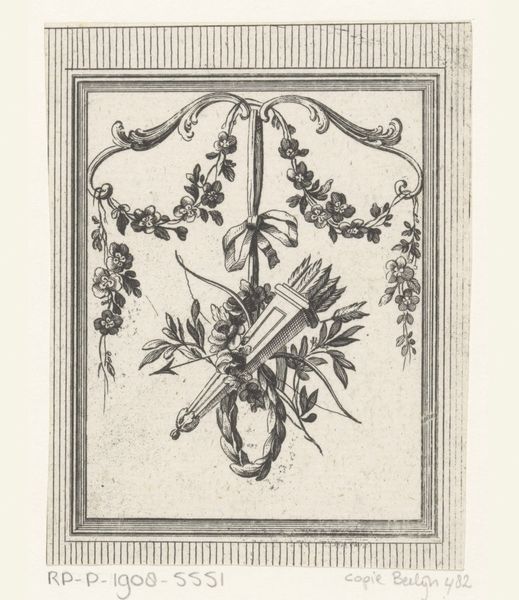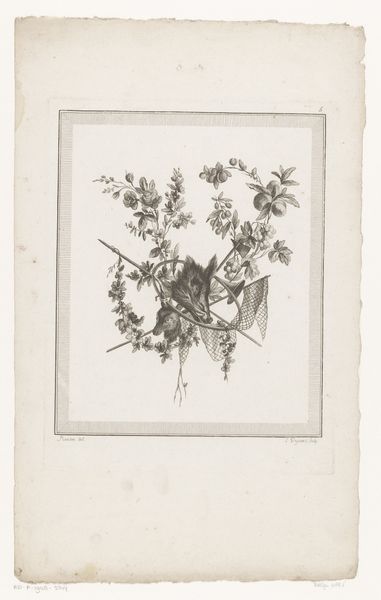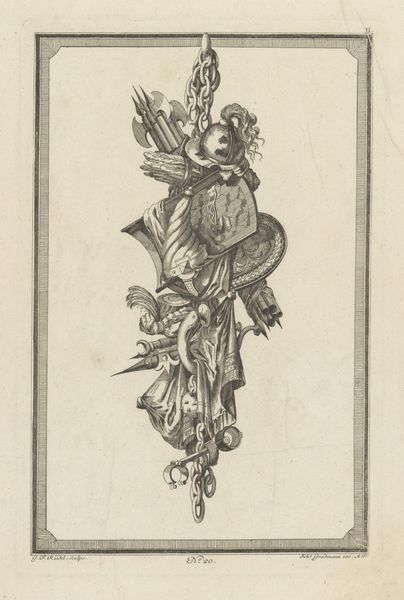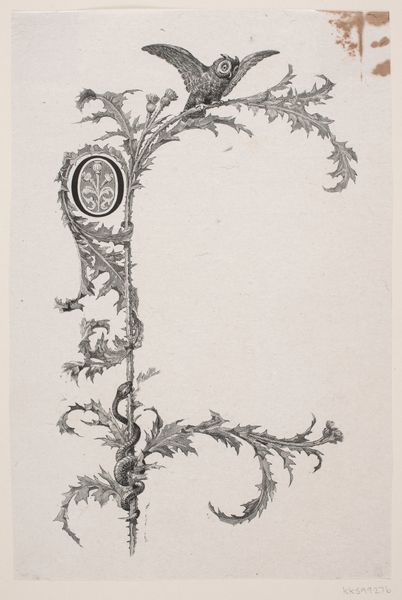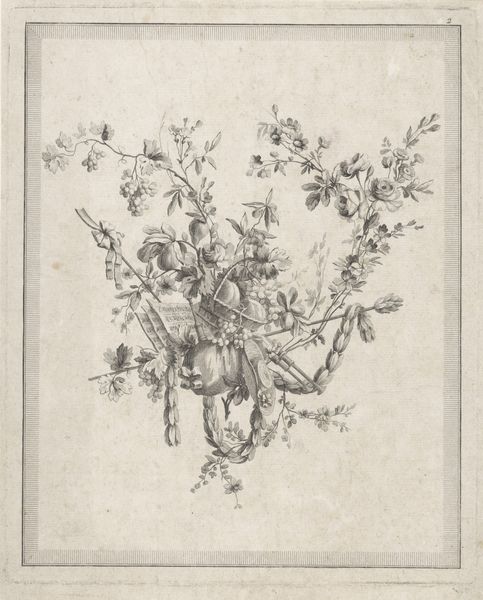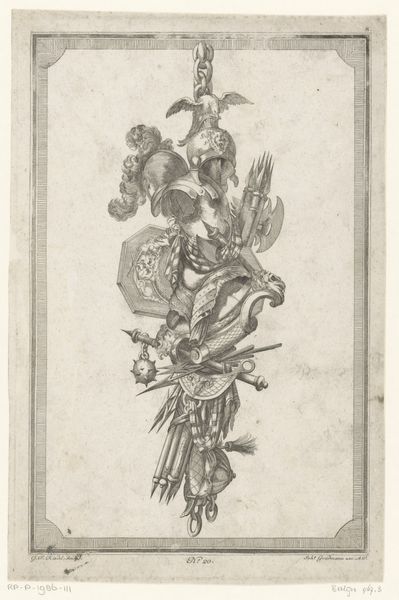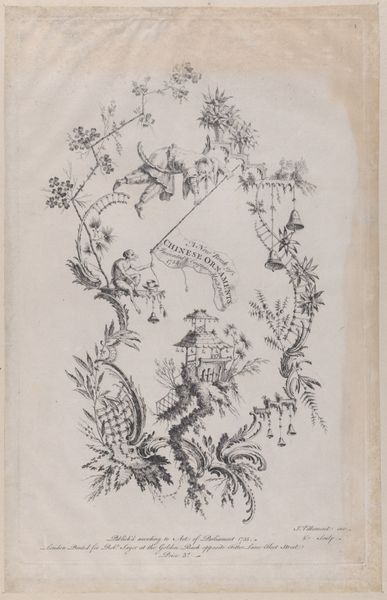
Dimensions: height 248 mm, width 178 mm
Copyright: Rijks Museum: Open Domain
Editor: This is "Schilderkunst," a print from around 1760-1784 by an anonymous artist, housed in the Rijksmuseum. It has this delicate, almost lacy quality to it because of all the floral details. What do you see in this piece? Curator: The very production of this image—an engraving, a print—interests me greatly. Think about its reproducibility. It democratizes art. These weren't singular, precious paintings owned by the elite. These were made to be circulated. And look closely: it depicts the *tools* of painting alongside decorative floral elements. This challenges a hierarchy. It puts the labour of artistic production—the very *making*—on the same level as, even intertwined with, beauty. Editor: That’s interesting! I hadn't considered the implication of using a print medium for this sort of allegorical work. How does this contrast with traditional paintings of the time? Curator: Traditional paintings often veiled the process. This print exposes the means. Think about the engraver’s hand, the printing press. The availability of printmaking itself enabled a different social engagement with art, impacting consumption. Before mass media, how revolutionary was this to challenge this? The artist's identity, 'Anonymous', further reinforces the theme, doesn’t it? Editor: Absolutely, and that’s made me reconsider the floral garland. Is it perhaps referencing labour and materiality beyond just the art-making implements represented? Curator: Precisely! Where do these materials come from? Whose labor cultivates the natural resources transformed into art and ornamentation? Editor: It really changes how you look at this piece, realizing the deeper context around artistic creation at the time. Thanks! Curator: Indeed! Analyzing art through the lens of material and production opens new and exciting perspectives.
Comments
No comments
Be the first to comment and join the conversation on the ultimate creative platform.
